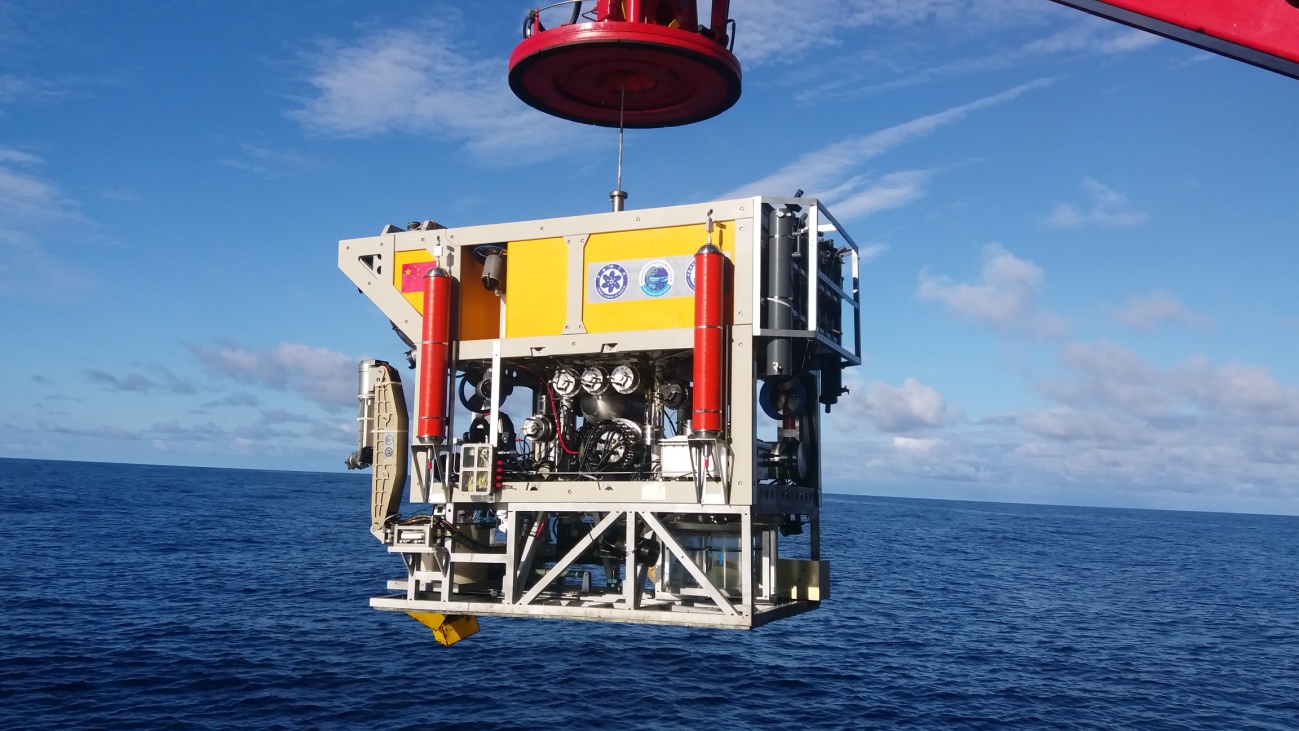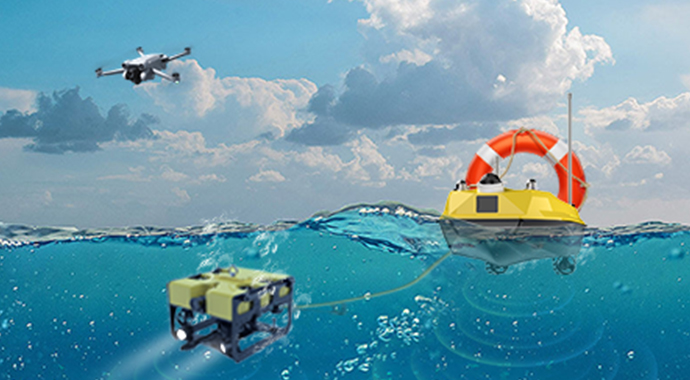Remotely Operated Vehicles
Remotely operated vehicles, or ROVs, are submersible robots that allow us to explore the ocean without actually being in the ocean. ROVs are connected to a ship through a series of long cables called a tether. This tether transmits operative commands from the surface vessel while the ROV sends back data, including live video, of its surroundings. Now, ROVs are used across the globe for both ocean exploration and industrial surveillance, allowing ROVs to be respectively categorized as Science-Class or Working-Class vehicles.
ROVs typically consist of video cameras, which transmit real-time surveillance to scientists aboard the surface vessel; lights; sonar systems; and a buoyancy foam pack, which allows the vehicle to remain light and easy to maneuver when in the water.

THE USE OF PHOTOGRAMMETRY
IN CORAL REEF RESTORATION, MALDIVES
How does it work?
ROVs can use external sensors that are mounted on the vehicle to measure things like conductivity, temperature, and depth. ROVs may be built with a manipulator arm designed for collecting biological and geological samples, which are deposited into boxes along the sides of the ROVs. The movement of the ROV and its manipulator arms is guided by pilots on the surface vessel via joysticks and touchscreens on a “control box.”
Why is it important?
ROVs provide scientists exceptional access to the deep ocean. The ability of ROVs to dive for extended periods makes them a versatile tool for achieving ocean exploration objectives, yet there are still significant technological advancements being made to ROVs. Brighter lights, increased data storage, and higher-quality cameras continue to be implemented in ROV updates to pave the way for a better-understood deep sea.

